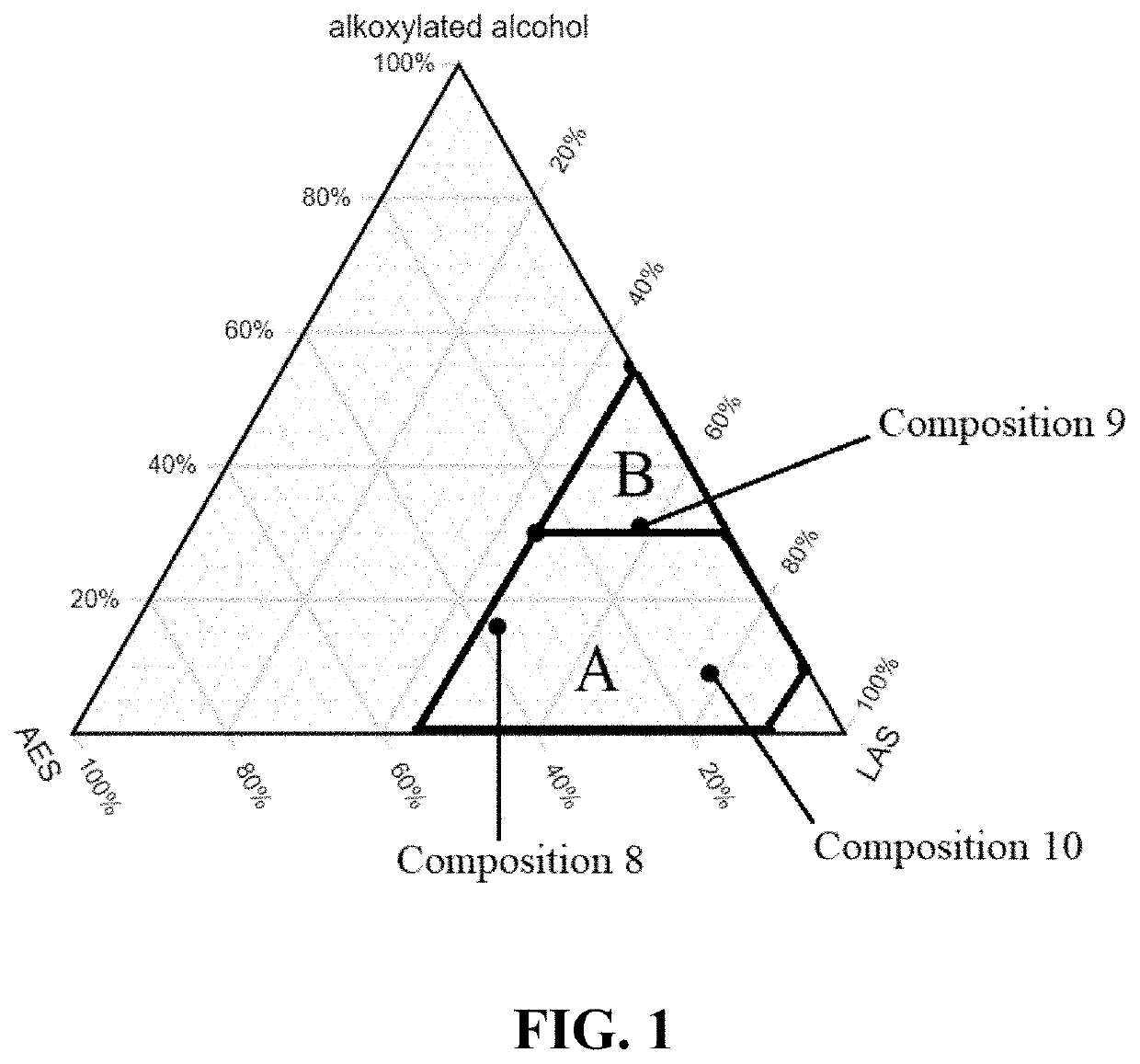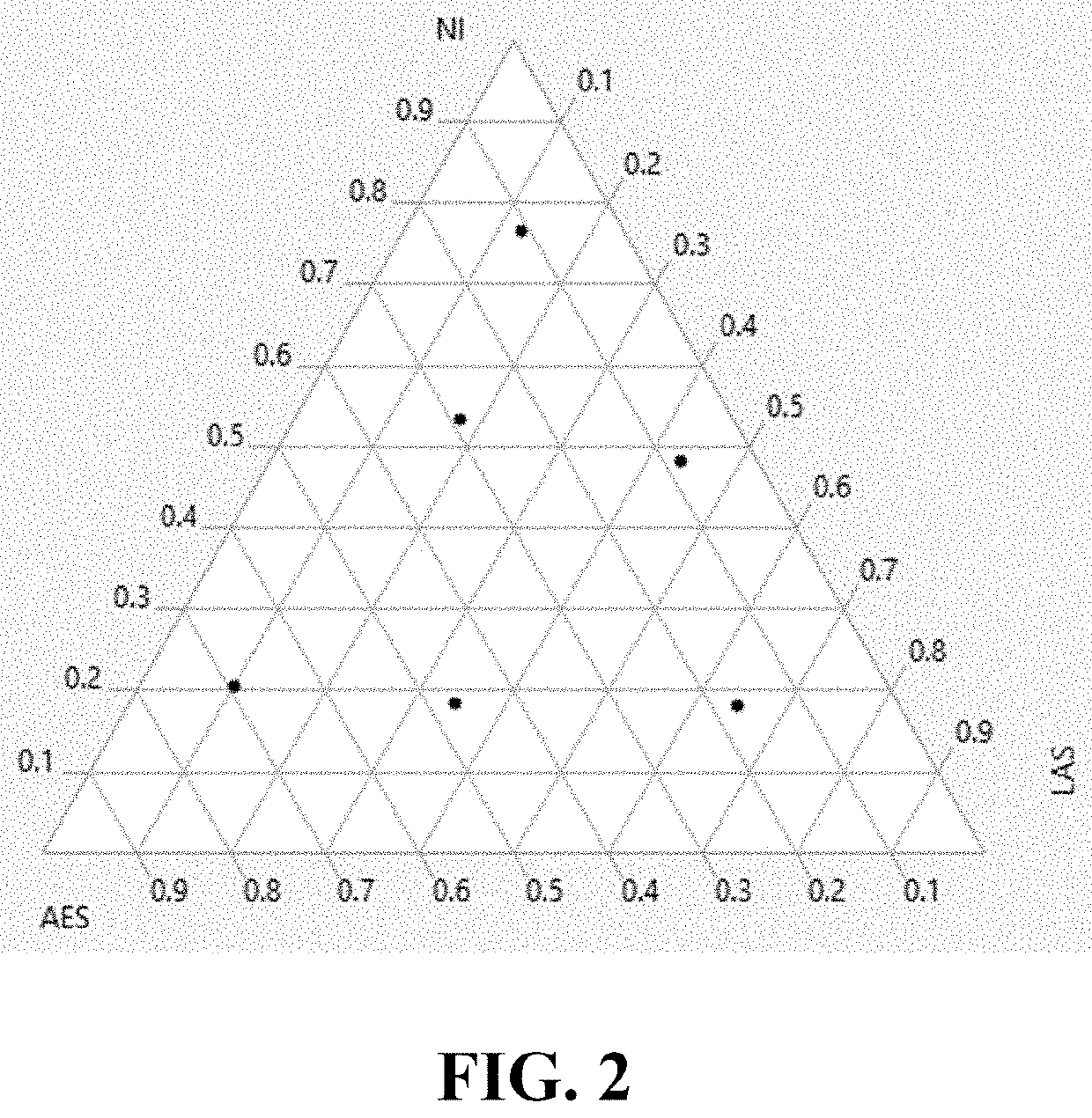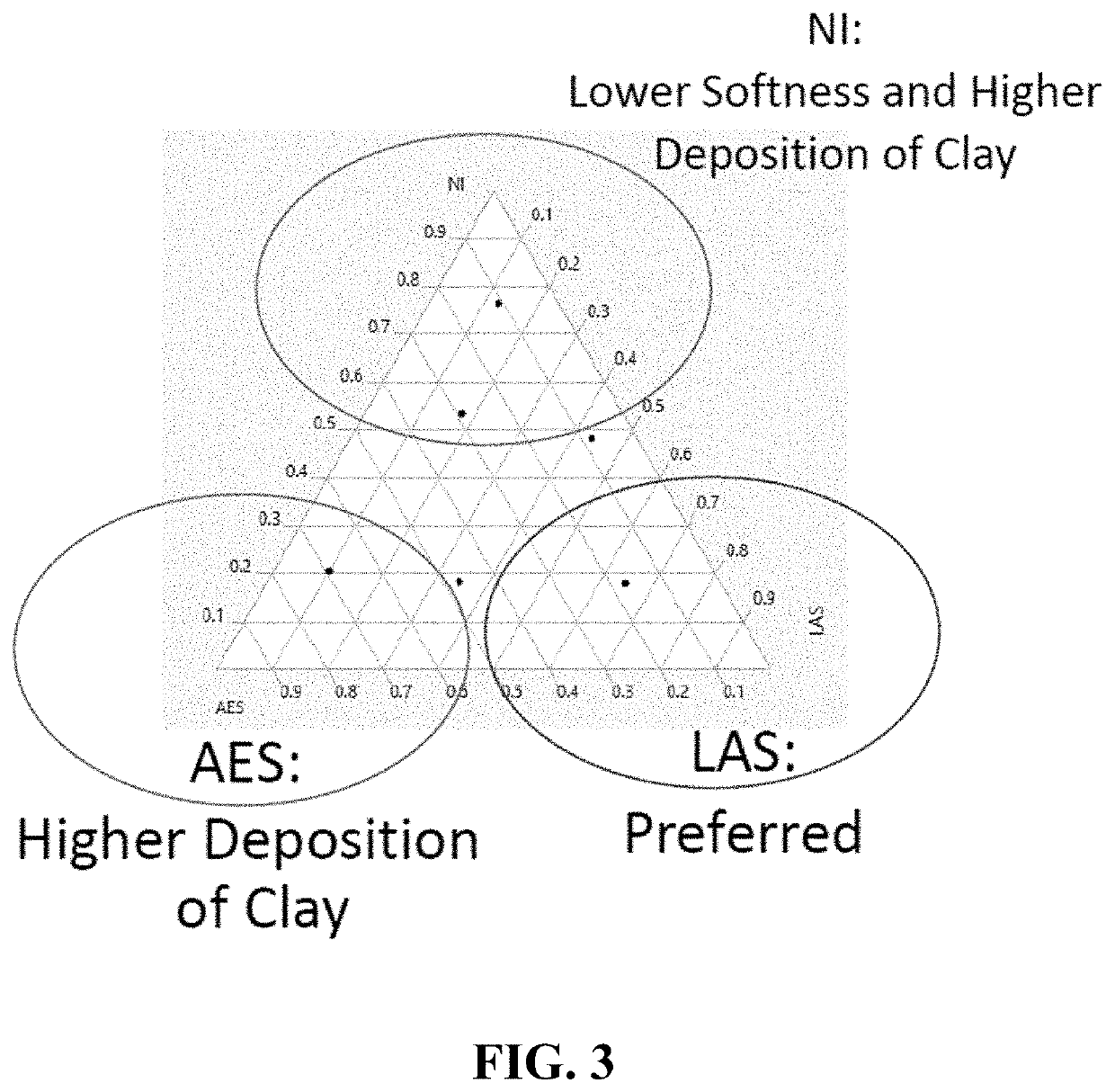Detergent Composition For Textile Softening And Anti-Redeposition
a technology of detergent composition and textile softener, applied in the field of detergent composition, can solve the problems of affecting anti-redeposition, textiles appear dingy and discolored, and do not perform as well as dedicated cleaning detergents or dedicated fabric softeners, so as to maximize the softening of cationic polymers, improve cleaning, anti-deposition and/or softening benefits, and improve the effect of anti-deposition and/or softening
- Summary
- Abstract
- Description
- Claims
- Application Information
AI Technical Summary
Benefits of technology
Problems solved by technology
Method used
Image
Examples
embodiment
Liquid Laundry Embodiment and Unit Dose Embodiment
[0087]This disclosure also provides a liquid laundry embodiment. For example, the composition may include amounts of water and / or any of the other components suitable for a liquid laundry application, as understood by those of skill in the art. For example, a liquid laundry detergent may include the surfactant component described above that is present in an amount of from about 8 to about 20 weight percent based on a total weight of the detergent composition.
[0088]This disclosure also provides a unit dose embodiment. For example, the composition may include amounts of water and / or any of the other components suitable for a unit dose application, as understood by those of skill in the art. For example, a unit dose detergent may include the surfactant component described above that is present in an amount of from about 40 to about 50 weight percent based on a total weight of the detergent composition.
Unit Dose Pack:
[0089]This disclosur...
example 1
[0101]The following Design of Experiment was used to measure the effect of particular surfactants on the deposition of a cationic polymer for softening (i.e., Supracare 241) in a Unit Dose detergent formula. More specifically, the following compositions were formed and evaluated.
[0102]Table 1 below sets forth ratios of active levels of various surfactants of six compositions, i.e., Compositions 1-6. These correspond to the ternary plot of FIG. 2.
TABLE 1AlcoholC12-C15LinearEthoxyAlcoholAlkylbenzeneCompositionSulfateEthoxylateSulfonateComposition 10.468830.183520.34765Composition 20.171150.181430.64742Composition 30.693120.203590.10329Composition 40.289760.532220.17803Composition 50.107690.764940.12737Composition 60.080240.482390.43737
[0103]The C12-C15 Alcohol Ethoxylate is a C12-C15 Alcohol Ethoxylate that is capped with approximately 7 moles of ethylene oxide.
[0104]Linear Alkylbenzene Sulfonate is 2-Phenyl Sulfonic Acid.
[0105]Alcohol Ethoxy Sulfate is Linear Alkylbenzene Sulfonate.
[...
example 2
[0114]Based on the results of Example 1, the following Design of Experiment was created for a liquid laundry detergent system, wherein particular alcohol ethoxy sulfate and C12-C15 alcohol ethoxylate regions of the ternary plot of FIG. 2 were removed from consideration based on their poor performance in Example 1. These removed sections are shown in the ternary plot of FIG. 4 as shaded. 12% active surfactant was used along with 0.35 wt % of Supracare 241. A 55.7 gram dose was also used.
[0115]Table 4 below sets forth the ratios of active levels of various components of the Compositions 7-13. These correspond to the ternary plot of FIG. 4.
TABLE 4AlcoholC12-C15LinearEthoxyAlcoholAlkylbenzeneCompositionSulfateEthoxylateSulfonateComposition 70.400.430.18Composition 80.160.370.47Composition 90.310.110.58Composition 100.090.130.78Composition 110.410.240.35Composition 120.000.450.55Composition 130.540.320.14
[0116]Table 5 below sets forth additional components of the Compositions 7-11, i.e.,...
PUM
| Property | Measurement | Unit |
|---|---|---|
| weight ratios | aaaaa | aaaaa |
| weight percent | aaaaa | aaaaa |
| weight percent | aaaaa | aaaaa |
Abstract
Description
Claims
Application Information
 Login to View More
Login to View More - R&D
- Intellectual Property
- Life Sciences
- Materials
- Tech Scout
- Unparalleled Data Quality
- Higher Quality Content
- 60% Fewer Hallucinations
Browse by: Latest US Patents, China's latest patents, Technical Efficacy Thesaurus, Application Domain, Technology Topic, Popular Technical Reports.
© 2025 PatSnap. All rights reserved.Legal|Privacy policy|Modern Slavery Act Transparency Statement|Sitemap|About US| Contact US: help@patsnap.com



